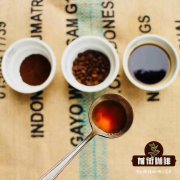Even coffee shop closed for winter, lucky continued losses, Internet coffee what?

Professional coffee knowledge exchange more coffee bean information please follow the coffee workshop (Wechat official account cafe_style)
Lian Coffee has closed at least 120 stores, and its poor development is actually just a microcosm of the difficulties facing the development of the chain coffee industry. In fact, other head players are also having a hard time, including the rapid development of Rui Xing.
Life is not easy for coffee chains.
The reporter learned that the Internet chain coffee brand "Lian Coffee" has completed a round of store adjustment around the Spring Festival, closing offline stores that are not profitable and early do not meet the requirements of the brand.
According to the Economic Information Daily, the proportion of Lian Coffee in the national closure reached 30%, 40%, of which Shanghai, which accounts for the highest proportion of stores, currently has only more than 70 stores in normal operation, compared with 120 stores in the region. Based on Lian Coffee's 400 offline coffee sites, at least 120 stores have been closed this time.
This is the first time that Lian Coffee has closed its shop on a large scale due to the imbalance between profit and loss since it made a profit at the end of 2017. In an interview two months ago, even Coffee CMO Zhang Hongji also revealed that the company would continue to lay offline channels and even open large cafes in places such as Beishang, Hangzhou and Shenzhen. At present, it seems that the existing coffee sites will face the fate of being "optimized", and the future of large cafes that have not yet completely landed is uncertain.
The reporter learned that even coffee profit problems in recent months, mainly due to the decline in sales in some stores. The decline in sales is related to the intensification of competition in the industry: Luckin Coffee plays aggressively, and even coffee, which is conservative in market strategy, is quite constrained.
Since receiving a new round of financing at the end of 2018, Ruixing has continued to adopt the strategy of "burning money for the market" to start a new round of subsidies, while even caffeine has not arrived for a long time, it is difficult to participate in the price war, and sales have been affected. In addition, Lucky's offline stores are expanding rapidly, with more than 2000 now, and the total number of stores far exceeds that of Lian Coffee, further squeezing its market share. In 2019, Lucky will open 2500 new stores, or surpass Starbucks in number.
Unable to fight for capital and flow, even coffee can only "tighten its belt": close some poorly run stores to stop losses in time, so as to keep the capital chain intact before a new round of financing arrives. Lian Coffee said the closure of some unprofitable stores would help the company return to profitability in the second quarter, while a new round of financing is actually in its final stages and will be announced before April.
The unfavorable development of even coffee is only a microcosm of the difficulties facing the development of chain coffee industry. In fact, other head players are also having a hard time, including the rapid development of Rui Xing.
Ruixing, with a start-up fund of 1 billion yuan, and then two rounds of financing of US $400m, spared no effort in spending money to expand the store-Lucky has accumulated a loss of more than 800m, and the loss will continue to expand. Luckin Coffee CEO Qian Yazhi also said recently that subsidies will continue for 3 to 5 years, and offline expansion will continue to accelerate.
The crazy speed has exposed the problems of high cost and extensive operation. A person in the coffee industry said that due to the pursuit of quick access to the store, Lucky can pay twice the market price, three times as much as Starbucks in the same area, and open stores in garbage areas that no one else wants, accompanied by some corruption problems.
The bigger hidden danger is that Lucky burns money to lay a foundation, but is unable to explore a clear profit model. Whether the previous high order volume can be maintained after the subsidy is stopped is a question mark. If the subsidy continues, it will require continuous blood transfusion of capital. Once the financing does not go well, Lucky's capital chain will face a great test.
To this end, Ruixing even wants to raise new funds through IPO. Not only has CFO been appointed, but also, according to EqualOcean, investment banks have begun to prepare information for Luckin Coffee on the listing of IPO on the Hong Kong Stock Exchange. However, the road has now encountered obstacles. According to the listing rules of the Hong Kong Stock Exchange, as Ruixing has been operating for only more than one year, it does not meet the requirements of at least three years' operating record for listing on the main board.
Throughout the industry, the major players not only have the opportunity to catch up with the industry consumption upgrading tide, but also face a lot of problems. Earlier, an executive from a well-known coffee company once revealed that the domestic chain coffee market was a "false prosperity". New Internet coffee brands, in addition to lucky financing speed, the rest of the players financing is not easy.
And veteran players Starbucks, Costa, Shangdao Coffee also have their own difficult classics. Starbucks China is growing so sluggishly that it has to digitally transform itself with Alibaba and open its takeout business; Costa sells Coca-Cola to find a new way out; and Shangdao Coffee opens a mode of closure, with few 3000 stores left.
The reason why the domestic chain coffee industry gives people the illusion of "prosperity" is to a large extent the high-profile development of Internet brands such as Ruixing, which has attracted the attention of capital to the whole market and masked the problems existing in the industry. For Chinese consumers, coffee is not a product of rigid demand, but can be replaced by tea and functional drinks. In addition, there are many problems in the industry, such as the lack of innovation ability, serious product homogenization, chaotic barista training system, unscientific management mechanism and low degree of digitization. The reporter learned from a source in the industry that as these problems have not been solved, investors are still in the wait-and-see stage for most of the projects in the industry.
In addition to bringing "false high" attention, Ruixing also brings greater problems to the industry. The "vicious competition" launched by aggressive players such as Rui Xing is eroding an industry that should have been won by products and talent training systems. Starbucks, which used to be "on the shelf", also had to "do as the Romans do" in doing takeout, passively participate in the price war, frequently promote discounts, and launch buy two get one free, free distribution fees, full reduction and other activities.
The bow of the head player will have a direct impact on the wind direction of the industry. According to this development trend, in the end, head players are likely to win not by products and accurate insight into the needs of users, but by capital games. A similar industry case is shared bicycles, and the success of ofo built by capital is eventually destroyed by the exit of capital. As the development trajectory is similar, "whether Lucky will be the next ofo" has also become the focus of attention.
At present, it remains to be seen whether Lucky will become the next ofo, but players in the domestic chain coffee industry need to be vigilant. Excellent products and services are the fundamental driving force for the sustainable development of the brand, and it is also the ultimate choice for consumers.
END
Important Notice :
前街咖啡 FrontStreet Coffee has moved to new addredd:
FrontStreet Coffee Address: 315,Donghua East Road,GuangZhou
Tel:020 38364473
- Prev

Coffee Storm-will coffee disappear from the world in the future?
Professional coffee knowledge exchange more coffee bean information Please pay attention to the coffee workshop (Wechat official account cafe_style) Climate change has affected the growth of coffee, especially the more sensitive Arabica beans are more sensitive to temperature, the increase in temperature will easily cause insect pests and leaf rust
- Next

Tokyo Coffee Expo 2019 is about to open, and interested children are ready to set off
Professional coffee knowledge exchange More coffee bean information Please pay attention to Coffee Workshop (Weixin Official Accounts cafe_style) Exhibition name: Tokyo Coffee Exhibition 2019 Exhibition date: 2019.07.032019.07.05 Exhibition hall: Yokohama International Peace Conference Hall ($> Yokohama Pacifico Yokohama) Admission fee: 3000 yen [Exhibition introduction] According to all Japan coffee
Related
- Why are the coffee in some coffee shops not enough after being frozen? What should I make up for my American latte cappuccino coffee after being frozen?
- How much water does it take to steam coffee by hand? Why is the coffee brewing and steaming time 30 seconds? What is the purpose of steaming coffee?
- The suspected drink contains too much caffeine! Overlord Tea Lady responds urgently!
- Starbucks rejects antique paper coupons?! Netizen: Missed marketing opportunities!
- What ratio of water temperature and ground does the smart cup method use to press coffee? The difference between brewed coffee and filtered coffee?
- What is the standard process for the purpose of coffee cup testing? What is the difference between hand-brewed coffee and cup testing?
- How to use hand-brewed coffee paragon small golden balls? How does cold coffee lock in the aroma of coffee?
- Is American coffee black? What is the difference between American coffee and drip coffee?
- Unexpected! Well-known tea beverage brand Lele Tea will withdraw from the Zhengzhou market!
- Starbucks enters the fashion and beauty industry?! Netizen: Give me an ice American eye cream

